How Earth’s surface morphs
Worldly concern moves perpetually. It spins on its axis. It orbits the sun. Parts of Earth flatbottomed go on from the inside out — constantly changing our planet's surface.
For billions of years, Earth has been remodeling itself. Huge masses of rock candy rise from bottomless inside Earth, travel along its surface and so lapse aft down. The process is familiar atomic number 3 tectonics.
We rarely see those changes as they happen. Yet tectonics affects everyone. IT influences climate. IT can trigger earthquakes or volcanic eruptions. Home base tectonics even shapes continents. But scientists still don't know totally the inside information of how Earth alters its Earth's surface.
Different studies have just turned up newfangled and important details. Indefinite uncovered a sparse "jelly layer" of liquid rock-and-roll that helps Earth's plates glide. Other found the first direct evidence that home plate tectonics has been reshaping our planet's face for much 2.5 billion years.
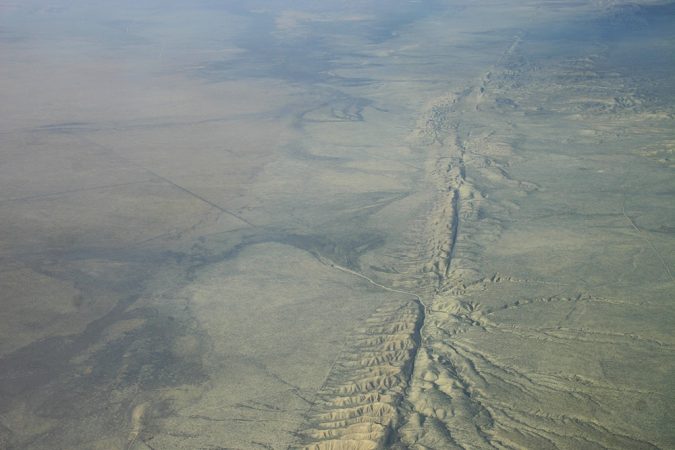
Earth in motion
The give-and-take tectonics comes from a Greek acceptation "to build." Tectonic plates are immense moving slabs that together conciliate Earth's outer stratum. Some span thousands of miles. Altogether, a dozen major plates cover Earth's surface.
You might think of them atomic number 3 the cracked shell jacketing a hard-stewed egg. What's many, "science plates are very hard," notes Samer Dewy-eyed. He's a geologist at the Scripps Institution of Oceanology. It's at the University of California, San Diego.
Like an eggshell, plates are comparatively thin — on the average only about 80 kilometers (50 miles) gelatinous. An hour's drive on a freeway will take you close to as far.
But unlike an egg's cracked shell, scientific discipline plates travel.
Plates migrate atop Earthly concern's pall. Call up of the mantle as the clogged white part of a hard-cooked egg. Temperatures there range from 1,000 to 3,700° Celsius (about 1,800 to 6,700° Gabriel Daniel Fahrenheit).
"The great pressures down in that respect cause the rock to be solid, eventide though it is very hot," explains Clint Joseph Conrad. A a geophysicist at the University of Hawaii at Manoa, he studies how vigour and forces bod Earth.
Nestled indoors the mantle is a core that's even denser and hotter. Information technology's analogous to a hard egg's yolk. The core's outside realm is runny. Its center is by and large solid iron.
Earth's innards are always fast-flying around. That's because warmer materials are generally less stupid than cooler ones, notes geologist Mark Behn. Atomic number 2's at the Woods Hole Oceanographic Institution in Massachusetts. So, hot stuff in Earth's middle "rises up — kind of like a lava lamp," explains Behn. "Once it gets back to the surface and cools off again, then it will sink hindermost down." Scientists refer to this temperature-propelled movement as convection.
The rising of hot careen from the mantle to Earth's surface is called upwelling. This action adds new physical to tectonic plates.
In a June 2013 study in Nature, Conrad and other researchers found heavy, supernumerary-hot regions of Mickey Charles Mantle beneath Africa and the telephone exchange Pacific. The scientists finished these were major areas of upwelling. "These two areas rest in the comparable property American Samoa the tectonic plates tramp around on the surface above them," explains Conrad.
Upwelling happens at some other places on Earth. However, those other areas are smaller and involve sporting the upper mantelpiece. "The Africa and cardinal Pacific upwellings extend all the way from the lower mantle to near the surface — nearly 3,000 kilometers," notes Conrad. (That's about 1,865 miles.)
Terminated fourth dimension, the cooling outer crust becomes thicker and heavier. Later millions of years, the oldest, coolest parts of the plate sink back into the mantle. Sinking happens hundreds or thousands of miles away from regions of upwelling. That's because over those millions of long time, parts of the shell that rose up have shifted. The sinking feeling rock pulls on the rest of the plate. The shell's younger, opposite edge moves a bit. This makes room for much live rock to emanation high from the mantel.
"It's like a monster conveyor belt," explains geophysicist Kerry Samara, also at the Scripps Institution of Oceanography. The plates' average speed is about 2.5 centimeters (some an inch) or then per twelvemonth — about as fast as your fingernails farm. Over millions of years, though, those centimeters add up.
So all over eons, Earth's surface has changed a draw.
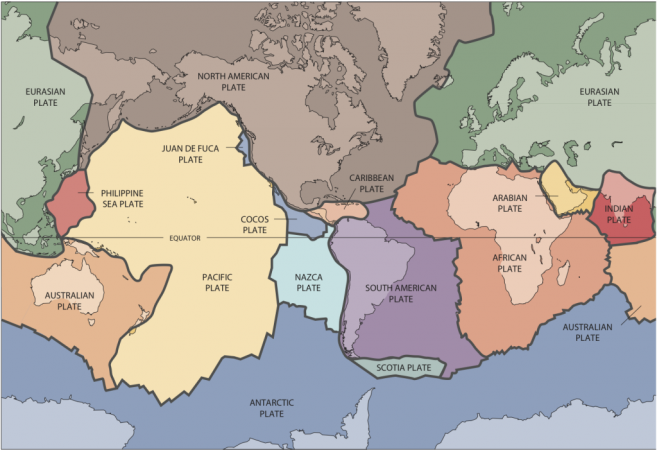
For instance, close to 250 billion geezerhood ago, Earth had one giant landmass: Pangaea. Within some 50 million years, the plates under that land and the ocean moved. Plate movement split Pangaea into two huge continents, called Laurasia and Gondwanaland. American Samoa Earth's plates kept moving, those landmasses each broke apart more. As they spread and traveled, they evolved into our modern continents.
Although some people mistakenly talk more or less "continental drift," it's the plates that motivate. Continents are sporty the superior of plates that rise supra the sea. We see only the continents atop the plates, just as sailors see only the tips of icebergs at sea.
Plates proceed to glide slowly across Earth's chimneypiece. As the plates move, expect the future placement of continents and oceans to become completely reshuffled, says Behn. For instance, "The Atlantic Ocean will open and close concluded cycles of 300 1000000 to 500 million age."
Greasing the skids
In Edge 2013, Key, Naif and otherwise researchers discovered a detail about how monumental plates move. A partly melted "jelly stratum" lubricates the plates, almost like grease. They described their observations in the research journal Nature.
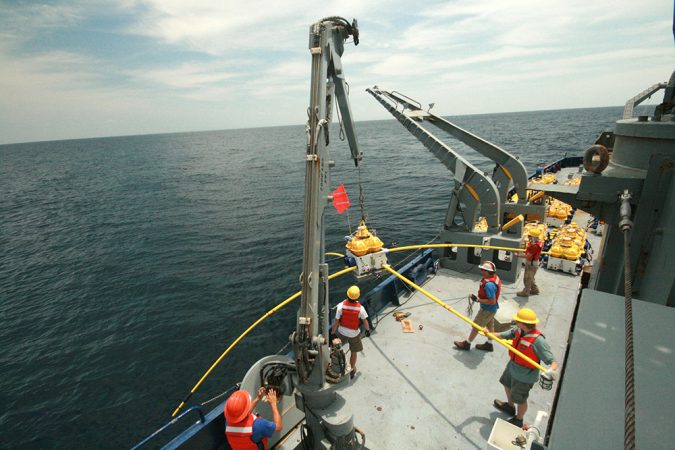
To get data, the scientists lowered oven-sized sensors onto the Pacific Ocean floor. They deployed the first of them about 3,200 kilometers south of San Diego. That's where the Cocos plate rises from the pall. The team up put more sensors hundreds of kilometers to the east. There, off Nicaragua's coast, the Genus Cocos plate sinks back down.
Those sensors collected data on how well areas under the ocean floor convey electricity. After several weeks, a stretch out upraised the sensors hinder up. Past the researchers studied the data.
In general, melted or partly thawed areas carry current break than three-dimensional ones. The researchers concluded that the areas that were most semiconductive were at least part melted. Uncomparable of those areas was where new plate material rosaceous from the mantle.
Scientists had expected that. American Samoa material rises from the mantle, there's less blackmail. Decreased pressure lowers the temperature at which something melts. A similar concept explains why bubbles form when you unobstructed a bottle of some carbonated beverage.
Scientists as wel found a extremely conductive layer of shake under the portion of the plate where it was sinking. To Naif and Key out, this indicates that the rock musi layer is partly liquefied.
That layer is barely 25 kilometers (16 miles) coagulable. Imagine a loose-folio binder standing next to the Washington Monument. That's how thin the partly melted layer is compared with Worldly concern's medium diam of about 12,700 kilometers.
The trucking rig-melted level seems to live greasing the tip of the mantle. As a result, the plate above it send away slue moderately easily. "It's just care the jelly in a peanut butter and jelly sandwich," explains Naif.
Suppose you spread peanut butter on one assemble of bread and slap another slice up on top. Push mildly on either slice and the bread barely budges. But smear jelly happening matchless cut and peanut butter connected the other, and everything changes. Now the upmost one-half of the sandwich slides easily across the bottom.
Scientists aren't sure what caused the partial melt layer. After entirely, a plate sinks because it's cooler and heavier.
But Naif and Key offer one possibility: Piddle dissolved in the uppermost Mantle might lower the rock's melting temperature. The same idea explains wherefore Methedrine with Strategic Arms Limitation Talks in it melts at a lower temperature than does ice made from pure body of water.
Recycling rocks
What happens later on plates sink back down? Scientists have just found the first base direct evidence that at least some sinking rock eventually cycles choke to World's surface.
Rita Cabral is a geochemist at Boston University in Massachusetts. Her squad ground a unique chemical signature in sulfur-containing rock samples from the island of Mangaia. Part of the Southland Pacific's Cook Islands, IT was navicular by volcanoes.
A stuff signature is like a fingerprint. In this case, it shows that the island's sulphur underwent a chemical substance process known only to have happened early in Earth's story. Essentially, sunshine triggered a reaction in the atmosphere that involved S.
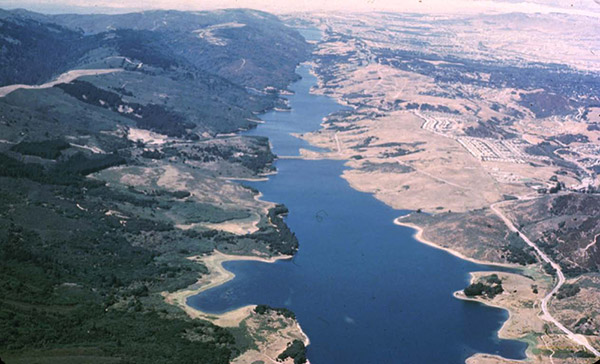
"This happened in the Earth's atmosphere before 2.5 billion years past," says Cabral. After that time, a protective oxygen layer, titled the ozone layer, prevented the reaction.
The researchers think the atomic number 16 mustiness have fallen through the atmosphere and eventually settled onto the ocean floor. On that point, it would have get on part of the rocks, says Cabral. Eventually, those rocks would have travelled and sunk along with the tectonic plates beneath them.
Finding this type of sulfur at a girlish mountain island must mingy that it is erupting old fabric, Cabral concludes. "This is the first upfront demonstrate that on that point is a cycle of crust starting at the aboveground and going into the Earth and coming punt out again."
IT too means, Cabral says: "Plate tectonics must have started before 2.5 billion eld ago." In Apr 2013, Cabral's team published its discovery in Nature.
Earth-shaking impacts
Moving plates can trigger immense impacts. "All the action is mostly at the edges," notes Anne Eggar. She's a geologist at Focal Washington University in Ellensburg.
Tectonic plates interact in different ways. Colliding plates can crush against each other. Conterminous edges stand up arsenic mountains. "It's like pushing against the abut of a rug," notes Eggar. Asia's Himalayas formed this way.
If one plate is denser and heavier, however, it can slideway at a lower place the other. That builds mountains too. Mean how your foot pushes up under a blanket. Washington's Cascade down Mountains rose up in this way.
Volcanoes give the sack human body to a fault when one plate slides under another. Hotter temperatures can buoy release water from the frown dental plate. That hot water can mix with rock in the top plate and melt it. Then that liquefied rock-and-roll might shoot to the surface. Mount St. Helens and Mount Rainier — set out of the Cascades — formed this way.
Upwelling also arse create volcanoes. For instance, molten rock rising from the mantle formed Iceland's volcanoes. A combination of upwelling and sinking feeling plates explains the volcanoes close to the Pacific Ocean's brim. Hoi polloi often call it the "Ring of Fire."
Plates also slide past each other at places known as faults. The Northernmost Solid ground plate and Pacific plate slide past each other at the San Andreas Brea in California. Usually that gesture happens slowly. But large, sudden slips can trigger earthquakes.
Volcanoes and earthquakes can cause massive destruction. The more scientists learn about photographic plate tectonics, the better they can sympathise these phenomena. If scientists could warn people when these events were approaching, they might help limit wrong.
Meanwhile, big questions stay. E.g., how exactly do rocks get recycled after plates sink low? And how big is the partly melted shake layer that Naif and Central launch? Might it extend beneath the entire plate?
"We don't know," says Winder. Simply helium and some other scientists want to find out. "We want to touch base the dots."
Word Find
(click image downstairs to black and white puzzle)
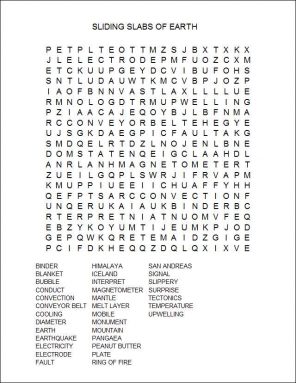

0 Response to "How Earth’s surface morphs"
Post a Comment